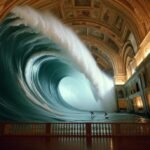Introduction
The intersection of technology and art has always been a fertile ground for innovation, and with the advent of AI models like OpenAI’s Sora, this intersection is becoming even more dynamic. Sora, known for its ability to generate realistic videos from text prompts, holds immense potential to revolutionize the field of digital art. This blog post explores how Sora can enhance digital art, pushing the boundaries of creativity and expression.
Expanding Creative Horizons
Sora’s advanced video generation capabilities enable artists to bring their most imaginative concepts to life. Artists can experiment with dynamic scenarios and complex visual narratives that were previously difficult or impossible to achieve. This expansion of creative possibilities allows for a new genre of digital art that is rich, diverse, and boundless.
Enhancing Realism and Detail
With its high-fidelity output, Sora provides digital artists the tools to create highly detailed and realistic artworks. The AI’s understanding of visual elements and its ability to render them in great detail means that artists can produce works that are both captivating and lifelike, elevating the standard of digital realism.
Streamlining the Creative Process
One of the most significant impacts of Sora on digital art is the streamlining of the creative process. Artists can generate complex scenes and visuals with simple text prompts, reducing the time and effort required in traditional digital art creation. This efficiency opens up more time for artists to focus on the conceptual and innovative aspects of their work.
Collaboration between AI and Artist
Sora fosters a collaborative environment where the artist and AI work in tandem. This collaboration can lead to the discovery of new styles and techniques, as the AI offers suggestions and alternatives that may not have been considered by the artist. It’s a synergy that enhances the artistic process and outcome.
Personalization and Customization
Digital artists can use Sora to create personalized art tailored to specific themes, styles, or requests. This level of customization is particularly useful in industries like advertising, where content needs to be aligned closely with brand identity and customer preferences.
Overcoming Technical Barriers
For many artists, technical skills can be a barrier to realizing their creative vision. Sora lowers this barrier, enabling artists with varying levels of technical expertise to create complex digital art. This democratization of digital art creation makes it more accessible and inclusive.
Ethical Considerations and Authenticity
While Sora offers vast opportunities, it also raises questions about authenticity and the ethical use of AI in art. Artists using Sora need to navigate these considerations, ensuring that their work remains original and true to their artistic vision while respecting the ethical boundaries of AI-generated content.
Conclusion
Sora’s impact on digital art is profound, offering new avenues for creativity, expression, and efficiency. As artists continue to explore the capabilities of Sora, we can expect to see a new wave of digital art that is more dynamic, diverse, and accessible. The future of digital art, augmented by AI like Sora, looks promising, filled with endless possibilities and potential for groundbreaking work.







